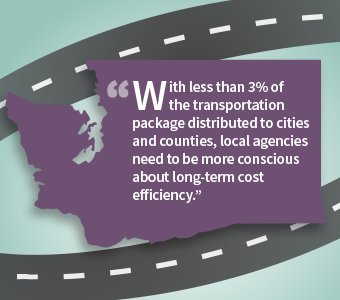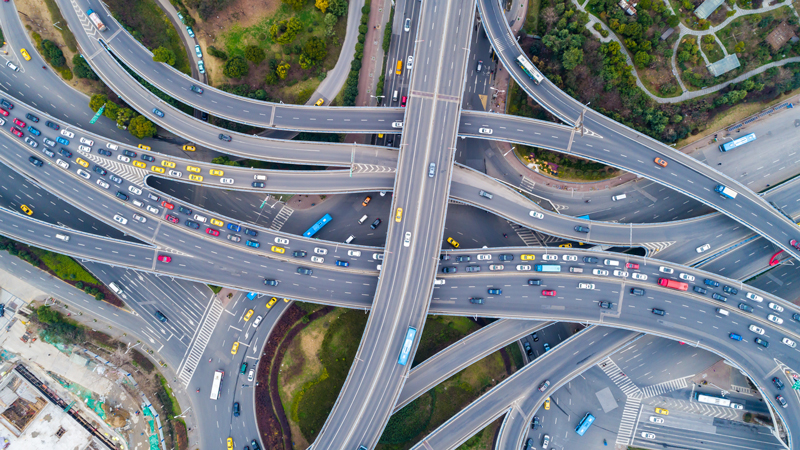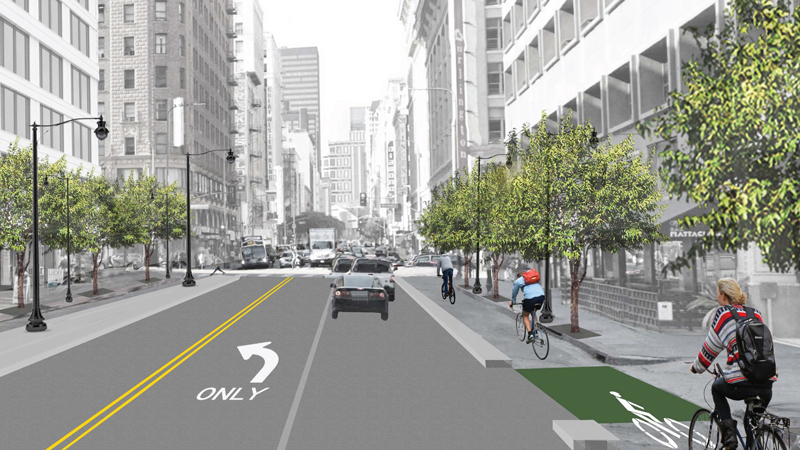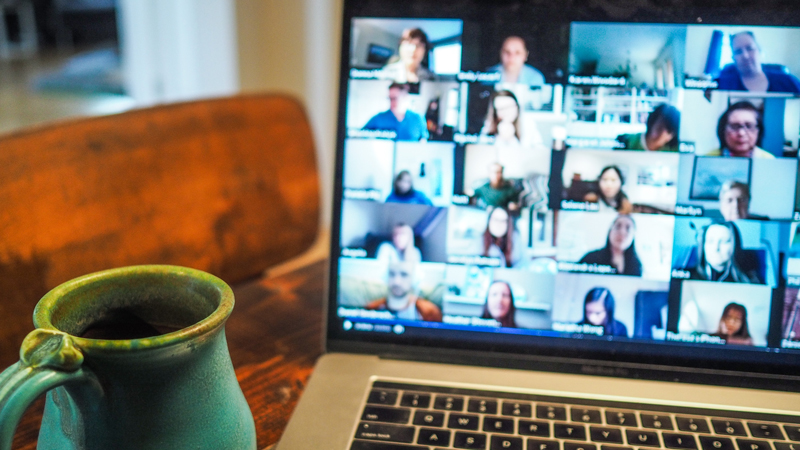Blogpost
3.9 minute read
January 13, 2016
I won’t sugarcoat it for you. Washington is in trouble. I’m talking specifically about our transportation infrastructure. This isn’t exactly news to anyone who’s used our highways or byways recently. We have to focus on a fix. Up until now, most solutions have backfired, and for good reasons:
- We imagined that we could solve our troubles by widening the corridors and building new ones, but after every lengthy construction project along I-405, more vehicles magically appeared.
- Our leaders acted as if the same old maintenance tactics would yield new results; instead, our roads kept deteriorating.
- We addressed different modes of transportation in a piecemeal way instead of taking a wide view and—surprise!—these proved to be unsustainable.
In Part 1 of this blog series, I looked at how the gas tax fits into transportation spending. In Part 2 of the series, I trumpeted the value of restoring our current infrastructure instead of focusing on funding new projects. Here in my grand finale, I hope to show how we can use technology, innovations, and different planning strategies to ensure a more sustainable and effective transportation system.

Changes that Take the Long View
Wholesale changes, rather than ones that nibble around the edges, are possible once we make funding ‘neutral’ by placing transit and road projects on an equal footing. Associated regulations and guidelines need the flexibility to go beyond vehicle lanes and include multimodal solutions, like:
- Dedicated transit lanes
- Bike lanes
- Sidewalks
- Transit cutouts and stops
- Traffic calming measures
Our new $16 billion Connecting Washington Transportation Package allocates over 10% of the money to transit, vanpool and mobility grants, bike paths and pedestrian walkways. This is not enough for future needs, but it’s a very promising start! The package also gives authority to Sound Transit and Community Transit for the expansion of public transit and sales tax measures.
Innovative, sustainable approaches are on the horizon for other pressing reasons. With less than 3% of the transportation package distributed to cities and counties (which own over 60% of the road miles), local agencies need to be more conscious about long-term cost efficiency in preserving, maintaining and building their infrastructure.
Kudos to the Washington Transportation Improvement Board for not only improving its own efficiency with the Performance Management Dashboard, but also for encouraging cities and counties to think outside the box: When public agencies compete for funding, they’ll get 15 points for sustainable approaches including low impact development, on-site pavement recycling such as FDR/CIPR/HIPR and low energy or solar lighting. Hallelujah!
A Fundamental Cultural Shift Is Upon Us
To learn about state-of-the-art technologies and practices, the International Technology Scanning Program (sponsored by the Federal Highway Administration) visited 80+ international public agencies. The result of these insights? A new strategy that wise U.S. public agencies are encouraged to adopt:
“[We learned] from agencies that had already experienced difficult financial situations and emerged with strong support for road maintenance and renewal among agency leadership, elected officials and the general public. The challenges they faced and the lessons they learned…led to some key findings:
- Pavement management is integrated into an asset management culture that supports agency business processes and long-term financial responsibilities.
- Agencies help elected and appointed officials be better stewards of transportation assets.
- Investment priorities are known and stakeholders are held accountable for their actions.
- Efficiency and value drive program delivery approaches are practiced.
Now we’re talking!
Let’s keep the conversation going:
- Don’t we all need to make a fundamental cultural shift in order to bring the long-term strategy of financial planning to a local level?
- Don’t we need to effectively manage our infrastructure, while communicating the risks of underfunding the maintenance of our largest asset, the transportation network?
- Isn’t it time to develop long-term financial planning collaboratively with government officials, who should be held accountable for the way public funds are used for infrastructure?
We taxpayers own approximately 80,000 miles of Washington roads, most nearing the end of their life expectancy, and yet we have allocated so little to maintain them, preserve them and make them safer. Don’t we owe it to ourselves and future generations to create an immediate plan of action?
You know my answer.
Now I’ll step down from my soapbox and ask you to step up. Please share your insights about improving our situation—and help get us closer to the light at the end of the tunnel!












